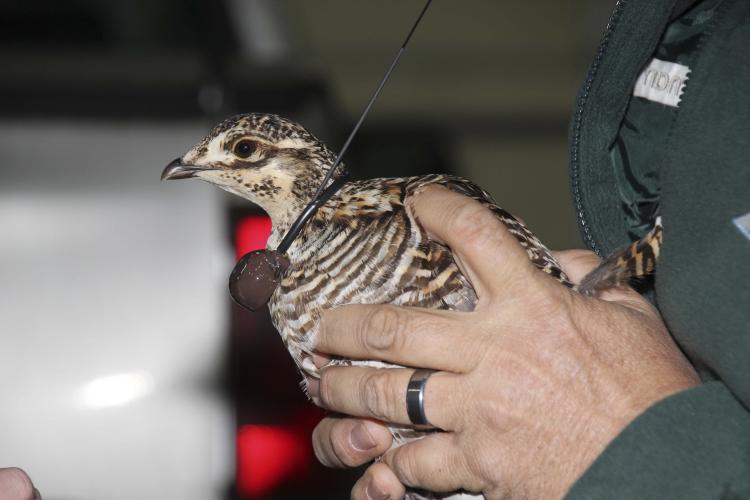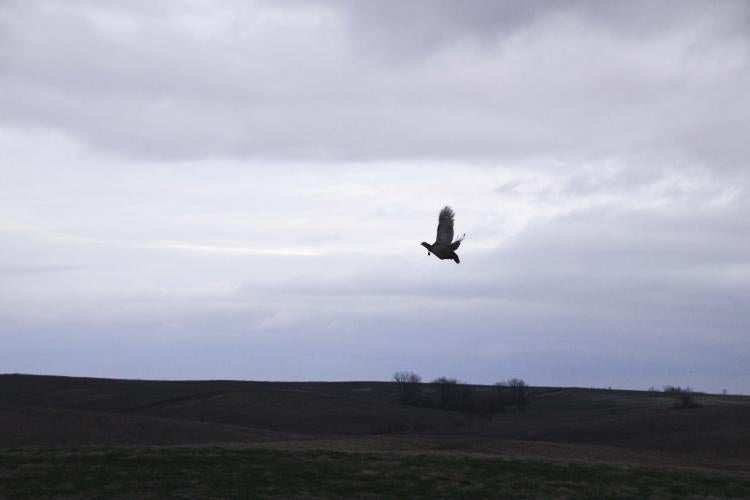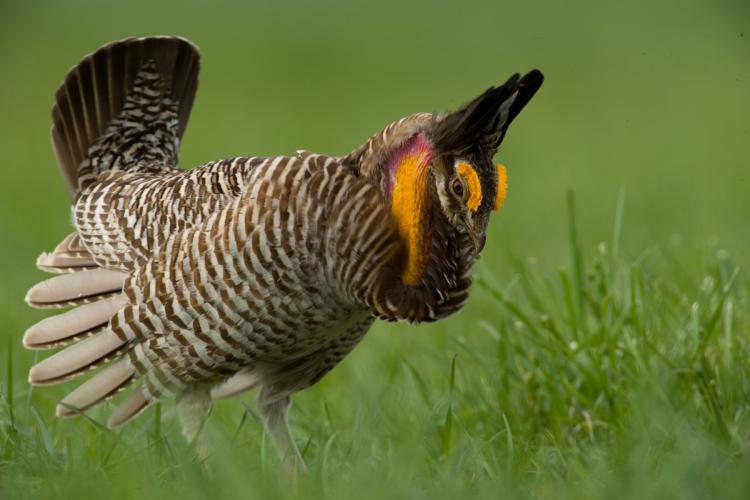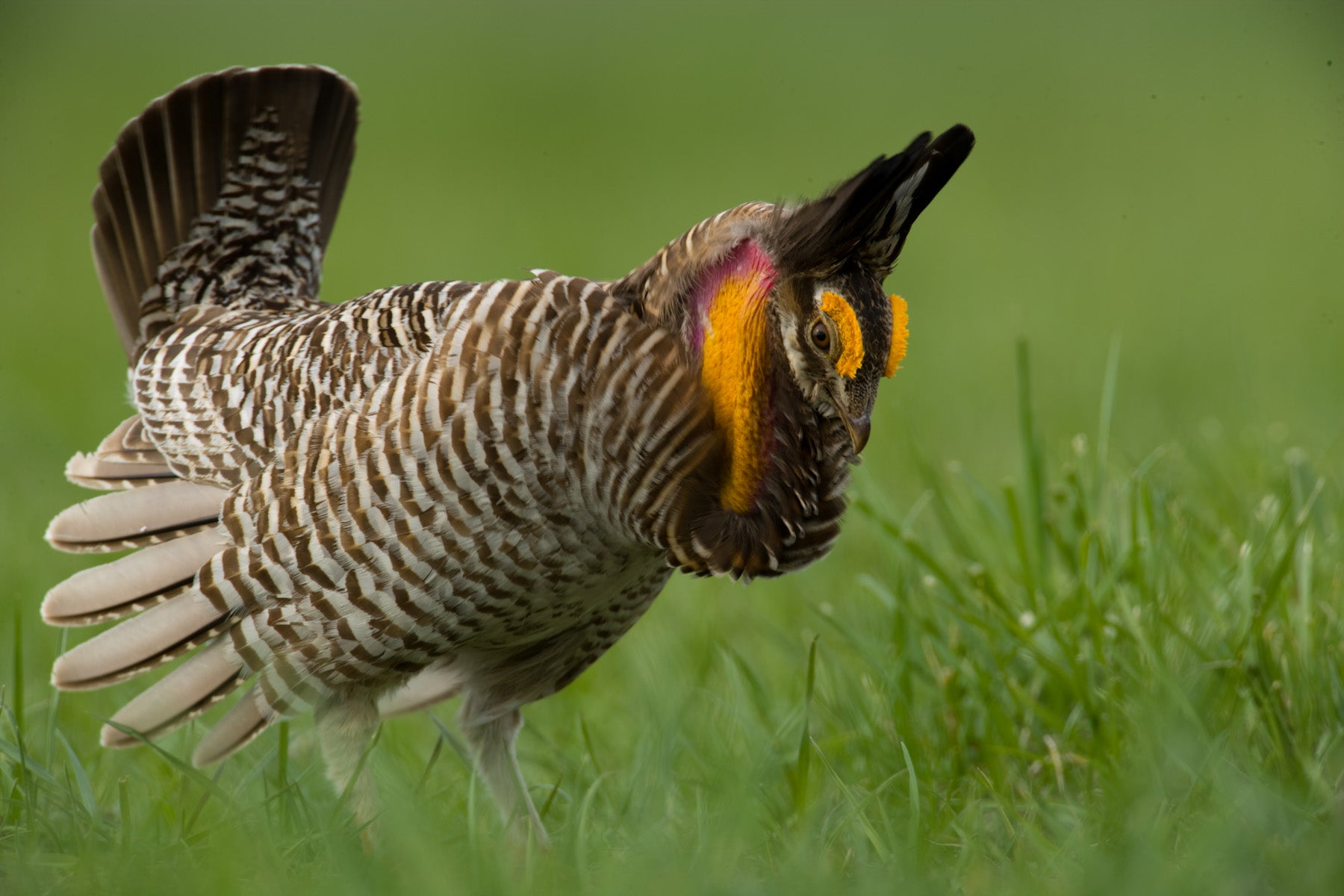
Xplor reconnects kids to nature and helps them find adventure in their own backyard. Free to residents of Missouri.


































Stay in Touch with MDC news, newsletters, events, and manage your subscription

Xplor reconnects kids to nature and helps them find adventure in their own backyard. Free to residents of Missouri.

A monthly publication about conservation in Missouri. Started in 1938, the printed magazine is free to residents of Missouri.






Eagleville, Mo. -- Seven prairie chicken hens on Thursday, April 11, cackled at sunrise in southwest Nebraska, and at dusk glided over the Dunn Ranch Prairie in northwest Missouri. Biologists trapped, moved and released the birds to carry tiny radio transmitters for research and new hope for a signature species critically endangered in Missouri.
“The intent is to infuse genetic diversity into this small population and bolster their overall numbers,” said David Hoover, a Missouri Department of Conservation (MDC) wildlife biologist.
Biologists are nurturing scattered flocks of prairie chickens numbering dozens of birds in a state where hundreds of thousands once roamed. Most of those are in southwest Missouri. Less than one-half of one percent of the state’s prairie remains. Prairie chickens, a grassland member of the grouse family, declined along with habitat loss.
But prairie chickens found their way back to Dunn Ranch thanks to wildlife conservation. MDC and research partners aim to ensure their future.
In the early 1980s, prairie chickens trapped in Kansas were released in southern Iowa, Hoover said. Some of those birds crossed the state line into Harrison County, Missouri, and began living and holding spring courtship rituals on a hilltop. That hilltop is now within the 4,000-acre Dunn Ranch Prairie, owned and managed by The Nature Conservancy (TNC). The rolling hills at Dunn Ranch are covered by remnant and restored native grasses and wildflowers. It’s a keystone property for restoring prairie chickens to the 70,000-acre Grand River Grasslands, a tallgrass prairie restoration partnership between Missouri and Iowa, private landowners, and several conservation groups and agencies.
But heavy rains in recent years knocked a Dunn Ranch flock that had grown to more than 60 birds down to less than 10 last year, said Randy Arndt, the TNC Grand River Grasslands Site Manager.
“Once they are suppressed in one area, there are no birds in adjoining areas to move in and replace them,” Arndt said.
So wildlife crews trapped 100 Nebraska prairie chickens at intervals in recent weeks, 34 for release at Dunn Ranch and the rest at Iowa’s Kellerton Grassland Birds Conservation Area. The project is a partnership between MDC, TNC, Nebraska Game and Parks Commission, Iowa Department of Natural Resources and the Blank Park Zoo in Des Moines, Iowa. Biologists hope the Missouri and Iowa flocks will be numerous enough someday to intermingle.
At Dunn Ranch, the release includes 17 females outfitted with small radio transmitters. The radios will enable MDC and TNC biologists to monitor the hens’ movements. The birds need diverse vegetation – varied species, short and tall, thick and thin – over a broad landscape for feeding, resting and nesting. TNC managers use grazing by bison and prescribed fire, burning only designated areas, to provide variety in the habitat. Tracking the birds’ movements will show their preferences.
“We can manage our habitat accordingly,” Hoover said.
Besides Dunn Ranch, MDC and TNC manage the nearby Pawnee Prairie for grassland birds. But adjacent private lands are also important. MDC provides expertise and cost-sharing funds for property owners to improve conditions for all grassland birds, said Kendall Coleman, an MDC private lands specialist. Pastures have been reseeded to native, warm-season grasses more friendly to wildlife. Trees that inhibit prairie chicken movement and harbor predators have been removed.
“We help them with the cost and they help us by improvements for prairie chicken habitat,” Coleman said.
Habitat at Dunn Ranch is in the best shape ever for grassland birds, Arndt said. That makes biologists hopeful that prairie chickens will rebound if given help. Plus studies have shown a higher concentration than usual of other prairie-loving birds that are species of concern, such as Henslow’s sparrows and bobolinks.
“We’re making a difference for the grassland bird species,” Coleman said.
Good weather for nesting success – not overly wet or cool – that’s what the Dunn Ranch prairie chickens need now.